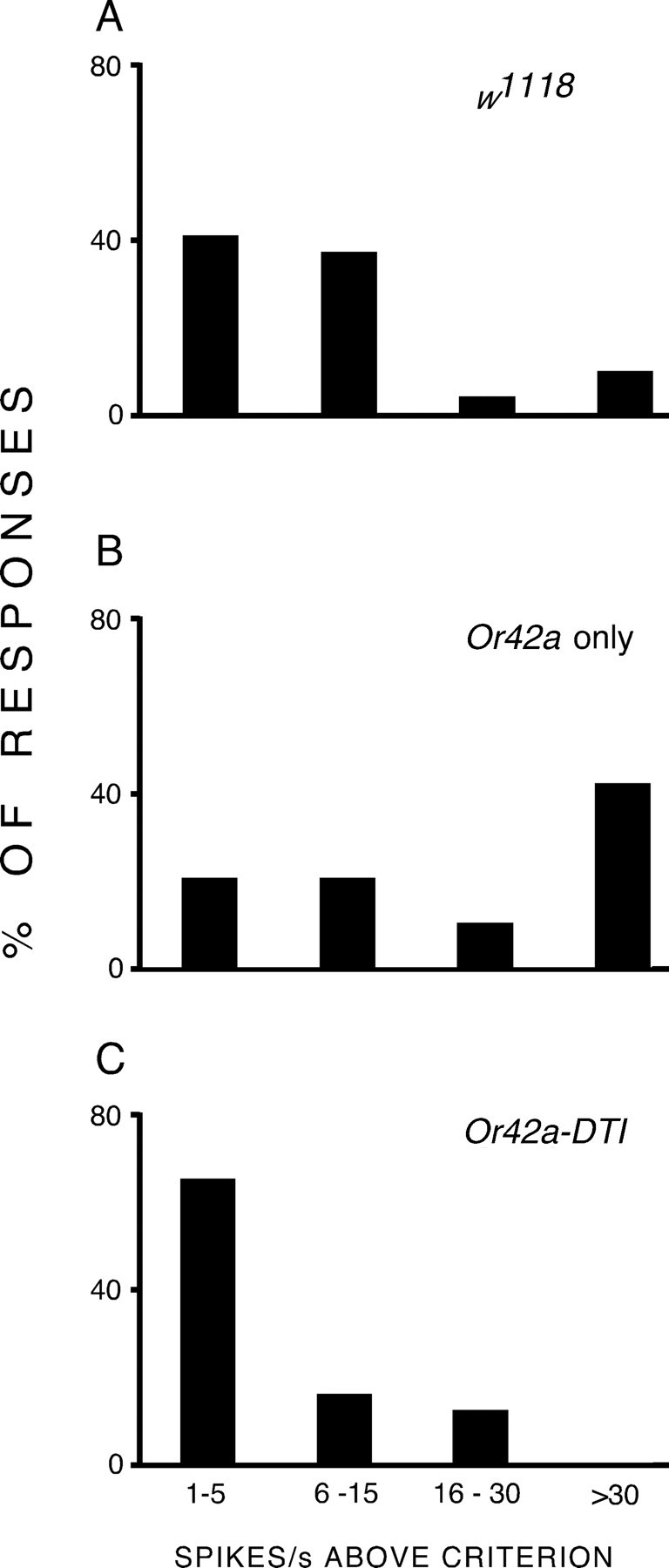Figure 4.

Loss of characteristic electrophysiological responses induced by killing a specific OSN. A–C, Larvae from control w1118 (A), [Or42a-Gal4/UAS-Or83b; Or83b −/−] (“Or42a only”) (B), and [Or42a-Gal4/UAS-DTI] (“Or42a-DTI”) (C) lines were stimulated with ethyl acetate for 1 s, and their electrophysiological responses were recorded. Responses were binned in spikes above criterion [criterion was +4 or −4 Hz (for excitation or inhibition, respectively) greater than the largest second-to-second change in spontaneous activity seen in each OSN in the 10 s before stimulation]. Or42a-DTI larvae, in which the Or42a OSN was killed, showed loss of the characteristic high-intensity responses (>30 Hz above criterion) that could be seen in Or42a-only and in w1118 larvae.
